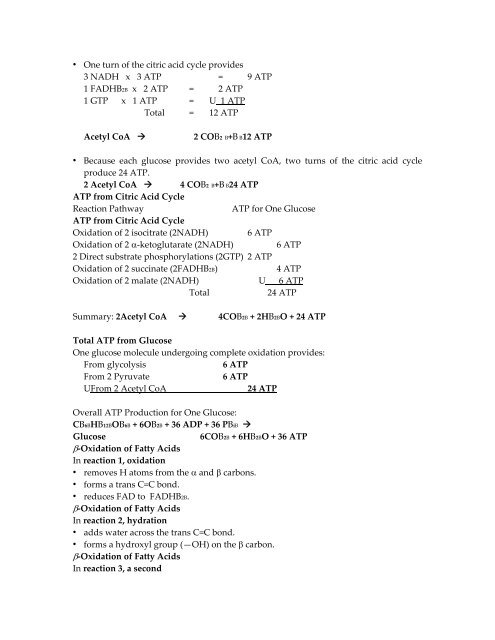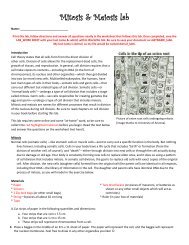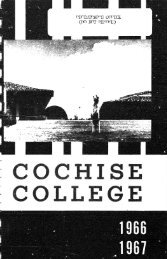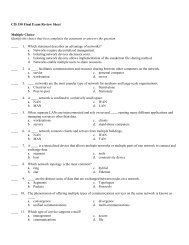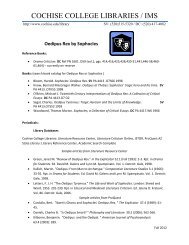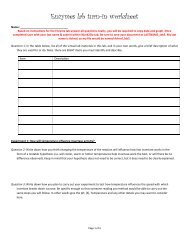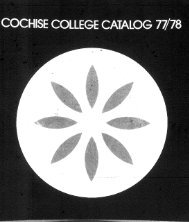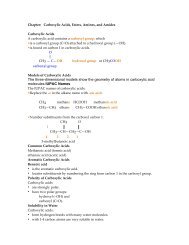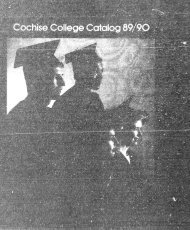Create successful ePaper yourself
Turn your PDF publications into a flip-book with our unique Google optimized e-Paper software.
• One turn of the citric acid cycle provides3 NADH x 3 ATP = 9 ATP1 FADHB2B x 2 ATP = 2 ATP1 GTP x 1 ATP = U 1 ATPTotal = 12 ATPAcetyl CoA 2 COB2 B+B B12 ATP• Because each glucose provides two acetyl CoA, two turns of the citric acid cycleproduce 24 ATP.2 Acetyl CoA 4 COB2 B+B B24 ATPATP from Citric Acid CycleReaction PathwayATP for One GlucoseATP from Citric Acid CycleOxidation of 2 isocitrate (2NADH) 6 ATPOxidation of 2 α‐ketoglutarate (2NADH) 6 ATP2 Direct substrate phosphorylations (2GTP) 2 ATPOxidation of 2 succinate (2FADHB2B)4 ATPOxidation of 2 malate (2NADH) U 6 ATPTotal24 ATPSummary: 2Acetyl CoA 4COB2B + 2HB2BO + 24 ATPTotal ATP from GlucoseOne glucose molecule undergoing complete oxidation provides:From glycolysis6 ATPFrom 2 Pyruvate6 ATPUFrom 2 Acetyl CoA24 ATPOverall ATP Production for One Glucose:CB6BHB12BOB6B + 6OB2B + 36 ADP + 36 PBiB Glucose6COB2B + 6HB2BO + 36 ATPβ‐Oxidation of Fatty AcidsIn reaction 1, oxidation• removes H atoms from the α and β carbons.• forms a trans C=C bond.• reduces FAD to FADHB2B.β‐Oxidation of Fatty AcidsIn reaction 2, hydration• adds water across the trans C=C bond.• forms a hydroxyl group (—OH) on the β carbon.β‐Oxidation of Fatty AcidsIn reaction 3, a second


